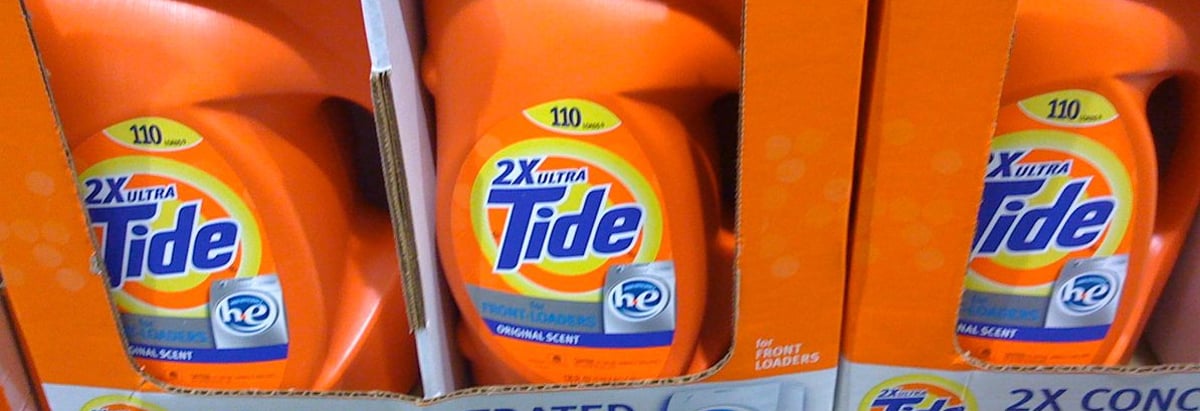- United States
- /
- Household Products
- /
- NYSE:PG
How Financially Strong Is The Procter & Gamble Company (NYSE:PG)?

There are a number of reasons that attract investors towards large-cap companies such as The Procter & Gamble Company (NYSE:PG), with a market cap of US$196.14b. One reason being its ‘too big to fail’ aura which gives it the appearance of a strong and stable investment. However, its financial health remains the key to continued success. I will provide an overview of Procter & Gamble’s financial liquidity and leverage to give you an idea of Procter & Gamble’s position to take advantage of potential acquisitions or comfortably endure future downturns. Note that this information is centred entirely on financial health and is a high-level overview, so I encourage you to look further into PG here. Check out our latest analysis for Procter & Gamble
How does PG’s operating cash flow stack up against its debt?
Over the past year, PG has ramped up its debt from US$30.41b to US$35.30b – this includes both the current and long-term debt. With this growth in debt, the current cash and short-term investment levels stands at US$15.53b for investing into the business. Moreover, PG has produced US$14.36b in operating cash flow during the same period of time, resulting in an operating cash to total debt ratio of 40.67%, meaning that PG’s operating cash is sufficient to cover its debt. This ratio can also be a sign of operational efficiency as an alternative to return on assets. In PG’s case, it is able to generate 0.41x cash from its debt capital.
Can PG pay its short-term liabilities?
With current liabilities at US$30.71b, it appears that the company has not maintained a sufficient level of current assets to meet its obligations, with the current ratio last standing at 0.91x, which is below the prudent industry ratio of 3x.

Is PG’s debt level acceptable?
PG is a relatively highly levered company with a debt-to-equity of 64.24%. This is not unusual for large-caps since debt tends to be less expensive than equity because interest payments are tax deductible. Accordingly, large companies often have lower cost of capital due to easily obtained financing, providing an advantage over smaller companies. No matter how high the company’s debt, if it can easily cover the interest payments, it’s considered to be efficient with its use of excess leverage. A company generating earnings after interest and tax at least three times its net interest payments is considered financially sound. For PG, the ratio of 59.96x suggests that interest is comfortably covered. High interest coverage is seen as a responsible and safe practice, which highlights why most investors believe large-caps such as PG is a safe investment.
Next Steps:
Although PG’s debt level is towards the higher end of the spectrum, its cash flow coverage seems adequate to meet debt obligations which means its debt is being efficiently utilised. Though its lack of liquidity raises questions over current asset management practices for the large-cap. Keep in mind I haven't considered other factors such as how PG has been performing in the past. I suggest you continue to research Procter & Gamble to get a better picture of the stock by looking at:
- Future Outlook: What are well-informed industry analysts predicting for PG’s future growth? Take a look at our free research report of analyst consensus for PG’s outlook.
- Valuation: What is PG worth today? Is the stock undervalued, even when its growth outlook is factored into its intrinsic value? The intrinsic value infographic in our free research report helps visualize whether PG is currently mispriced by the market.
- Other High-Performing Stocks: Are there other stocks that provide better prospects with proven track records? Explore our free list of these great stocks here.
New: Manage All Your Stock Portfolios in One Place
We've created the ultimate portfolio companion for stock investors, and it's free.
• Connect an unlimited number of Portfolios and see your total in one currency
• Be alerted to new Warning Signs or Risks via email or mobile
• Track the Fair Value of your stocks
Have feedback on this article? Concerned about the content? Get in touch with us directly. Alternatively, email editorial-team@simplywallst.com
Simply Wall St analyst Simply Wall St and Simply Wall St have no position in any of the companies mentioned. This article is general in nature. We provide commentary based on historical data and analyst forecasts only using an unbiased methodology and our articles are not intended to be financial advice. It does not constitute a recommendation to buy or sell any stock and does not take account of your objectives, or your financial situation. We aim to bring you long-term focused analysis driven by fundamental data. Note that our analysis may not factor in the latest price-sensitive company announcements or qualitative material.
About NYSE:PG
Procter & Gamble
Engages in the provision of branded consumer packaged goods worldwide.
Established dividend payer and good value.


